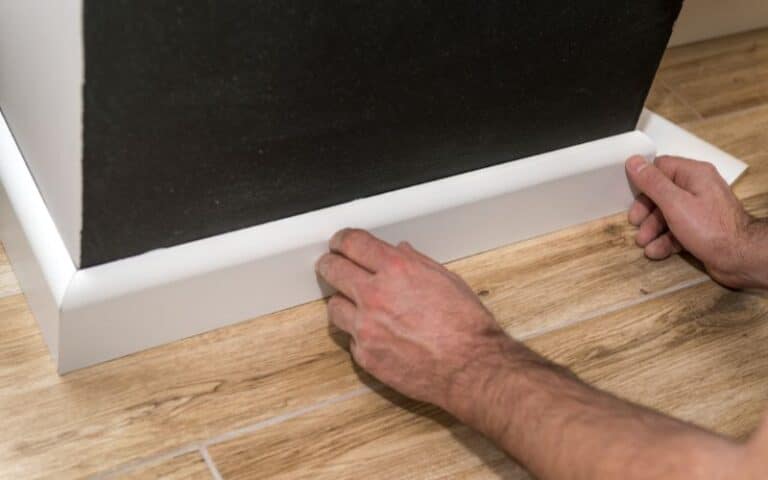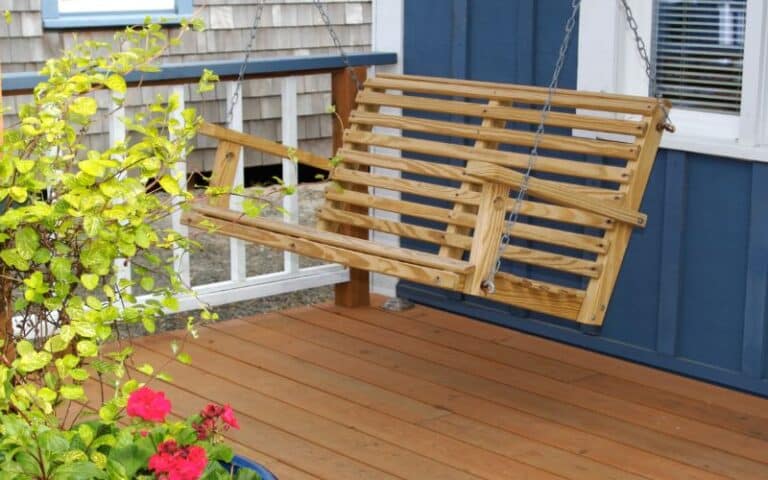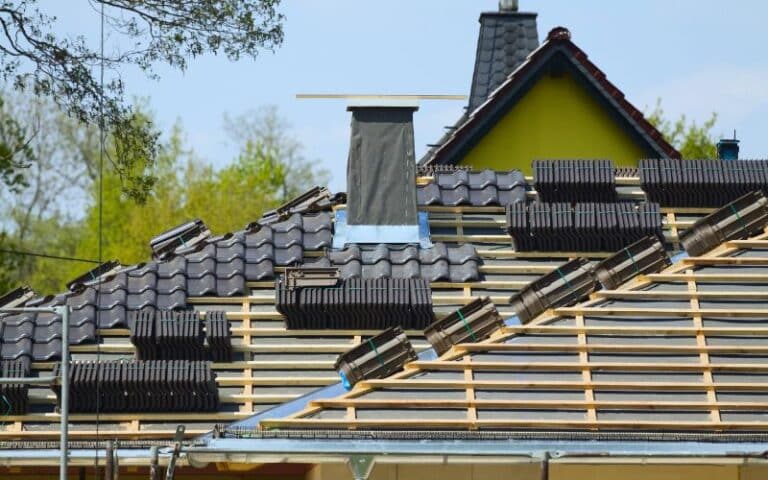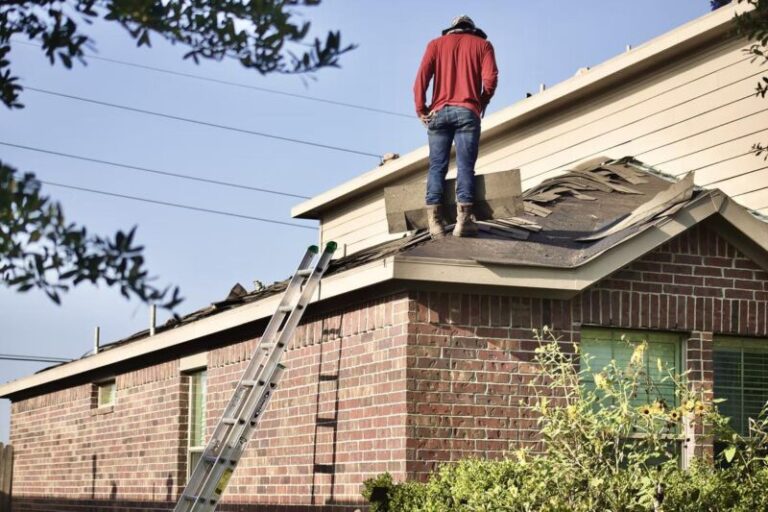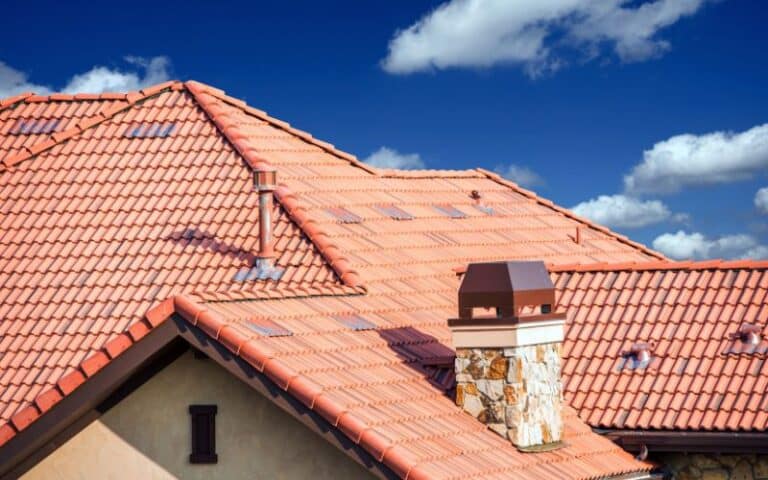A generator on a roof is an excellent way to power your home. It provides you with a reliable source of electricity during power outages, as well as during dramatic weather conditions.
These weather conditions include hurricanes, snowstorms, sandstorms, and even floods.
A generator on a roof has a lot of uses for different purposes. These purposes include providing backup power for medical equipment or running water pumps when the grid is down.
Installing a generator on your roof is good for several reasons. First, it is a great way to manage the tiny space in your home effectively, and it protects your expensive generators from vandalism and harsh weather conditions. These weather conditions can include floods, sandstorms, snowstorms, or hurricanes.
Ready for a Roofing Quiz?
Can You Put A Generator On The Roof?

The answer is yes, and you can put a generator on the roof -be it a natural gas generator or a diesel generator.
Having a generator on your roof that can run when you need it the most is a good idea. You should consider having a generator on your roof for several reasons.
One reason is that generators can be very noisy and annoying. This fact is especially true if neighbors will not appreciate the noise of generators running in their yard all day.
If you live in an apartment or condo building, some may be concerned about how loud these machines would sound while trying to sleep.
Another reason it is essential to have a generator on your roof is that some people see them as eyesores and do not want them there.
They think that these machines take up space and make them look bad. This issue arises because they are not visible outside the generator’s commercial building, where everyone can see them.
If this issue bothers you, then it might be worth looking into placing your generator on the roof.
Rooftop Generator Installation
When planning a rooftop generator installation, choose the location on your rooftop to mount the generator and begin the rooftop generator installation process.
Let an experienced professional carry out the installation as you have to consider many components during the process.
The roofing company also needs to ensure that you have all the correct permits in place before they begin working on your roof (be it a natural gas generator, a fuel generator, or a diesel generator)
After installing the base, you need to install a generator. This event is done by connecting a power cable from the generator to your electrical system.
You will also need to ensure that there are no obstructions like pipes so that it does not get damaged during installation.
The next step is to connect your fuel source with the generator’s tank to start working after connecting all other components.
After this step, you will also need to connect a battery bank with your system to function for long durations without any interruptions in the power supply due to overload or lack of battery life.
There are some specifications you need to consider during rooftop generator installation.
These specifications are:
#1. Wind
The higher the wind force, the greater the potential damage. The enclosure specification must consider wind forces to protect the building components adequately. High buildings can encounter winds of up to 150 mph.
#2. Lower Temperature
Temperatures can drop to lower figures on the top of tall buildings. So, you should consider installing or applying cold starting systems or aids to assist the start-up of your generator’s combustion engine.
#3. Sound Attenuation
Sound attenuation is a form of acoustic absorption which reduces the intensity of sound waves reaching your ears.
Many places use this to reduce noise levels. You can find them in both residential and commercial buildings.
Sound attenuation is most often used in public areas such as airports, train stations, offices, shopping centers, and hospitals. It’s also used to keep traffic noise at bay.
Sound attenuation does not prevent you from hearing any audio; it only changes how loud that audio sounds when it reaches your ears.
So, if you’re playing music on an iPod at 100% volume, it will sound fine regardless of whether sound attenuation is installed on your radio station.
#4. Vibration
You should fill the unit with vibration isolators. The purpose of these is to reduce the unwanted vibration on the roof that can cause premature wear and tear.
This should also prevent vibration into the building’s structure. The roofing material must be in good condition but with minor damage. The installer should have a list of all materials used on the roof.
This will help them determine if any damage needs to be repaired or replaced. The waterproofing membrane should be in good condition but not damaged too much by age or weather conditions.
If there are holes in it, it needs to be repaired or replaced before installation begins.
#5. Spill Containment
There should be a containment under the generator that is big enough to capture leakages of fluids such as fuel or engine oil. The containment system’s integrity depends on its design’s extent.
A poor design or construction will result in an inability to contain the spill and clean up after it is over.
#6. Automatic Transfer Switch
The automatic transfer switch is a circuit breaker that automatically disconnects power from the generator and connects it to your house’s electrical system.
This prevents damage to your generator from overloading when you are not around to start it up.
You can also use the automatic transfer switch to connect multiple generators to your home’s electrical system, which will require an additional circuit breaker.
Can You Put A Generator On A Flat Roof?
A generator can be mounted on a flat roof without any trouble. The only problem you may encounter is that the generator might slide down on the roof if there is not enough weight.
But, as long as you have a sound ground system and an extra set of hands to hold it, you should be fine.
You can put a generator on a flat roof, but it will not be easy. First, you must ensure that it fits on the roof and is appropriately secured.
If you are unsure how to do this, consider contacting a professional electrician or roofer who can help you figure out how to put your generator on the roof safely.
What Kind Of Base Is Best For A Generator On Roof?
The base you use will depend on where you plan to place it. The base for the generator should be a level, flat surface. It could be a concrete slab, or you could use a pad to put the generator on.
A concrete footing is sufficient if you plan to place your generator on a concrete slab. If you place your generator on a wooden deck, you will need something more substantial than just a plank or board.
You need to determine if the generator is heavy enough to require a jack stand to lift it off its wheels. If so, you will need to ensure that there are no obstructions between it and the stand.
If there are any, they will need to be moved or removed so that you can safely get under the generator and lift it off its wheels.
The jack stand should be placed underneath the generator so that it does not damage anything when placed on top of it.
Generator Set Systems Installed On Top of Tall Buildings
There are many reasons to install generators on rooftops, and this installation process is tested and trusted.
This section discusses all the things you need to consider when installing a generator on the rooftop of tall buildings.
- Enclosed is set for maximum weather protection so the generator can withstand extreme weather conditions such as strong winds.
- A ground-located bulk tank to feed a daily service tank on the rooftop if the fuel is diesel, especially for diesel generator sets. The tank should also have a spillage containment unit in place.
- Convenient rooftop access is present for periodic service maintenance.
- The presence of a transfer pump from a ground-based bulk storage tank to supply a generator fuel tank.
- You should install the transfer switch near the building’s main power distribution.
- The generator control panel should be on the lower floor near the transfer switch.
- Vibration isolators distribute vibrations your generator makes to other parts of the building.
Conclusion
Having a generator on your rooftop has a lot of benefits. It is a great way to manage your home’s space efficiently.
The noise generated by generators can be pretty loud and obnoxious, so if you plan on using one in your home, make sure you are living somewhere that doesn’t have neighbors nearby. And that is your rooftop!

